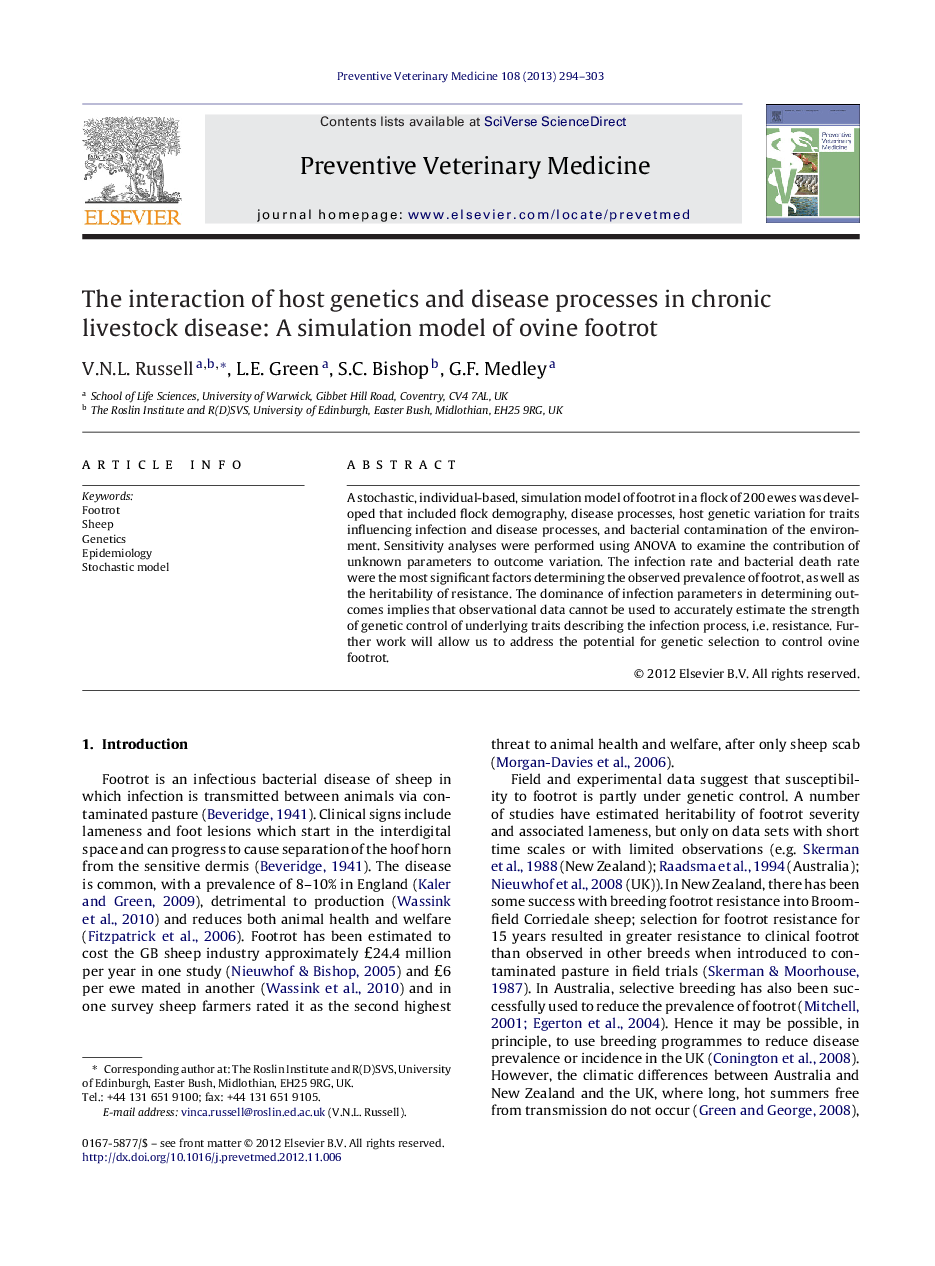| Article ID | Journal | Published Year | Pages | File Type |
|---|---|---|---|---|
| 2452635 | Preventive Veterinary Medicine | 2013 | 10 Pages |
A stochastic, individual-based, simulation model of footrot in a flock of 200 ewes was developed that included flock demography, disease processes, host genetic variation for traits influencing infection and disease processes, and bacterial contamination of the environment. Sensitivity analyses were performed using ANOVA to examine the contribution of unknown parameters to outcome variation. The infection rate and bacterial death rate were the most significant factors determining the observed prevalence of footrot, as well as the heritability of resistance. The dominance of infection parameters in determining outcomes implies that observational data cannot be used to accurately estimate the strength of genetic control of underlying traits describing the infection process, i.e. resistance. Further work will allow us to address the potential for genetic selection to control ovine footrot.
